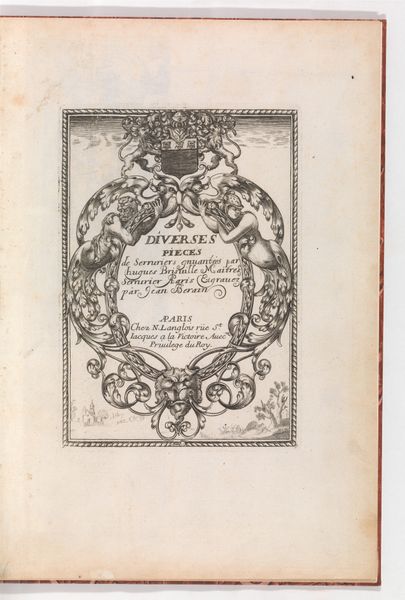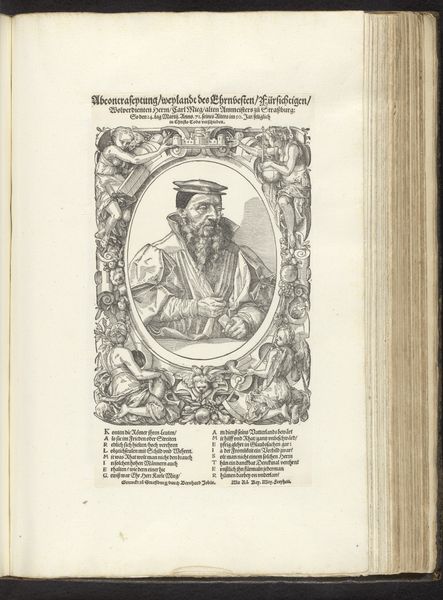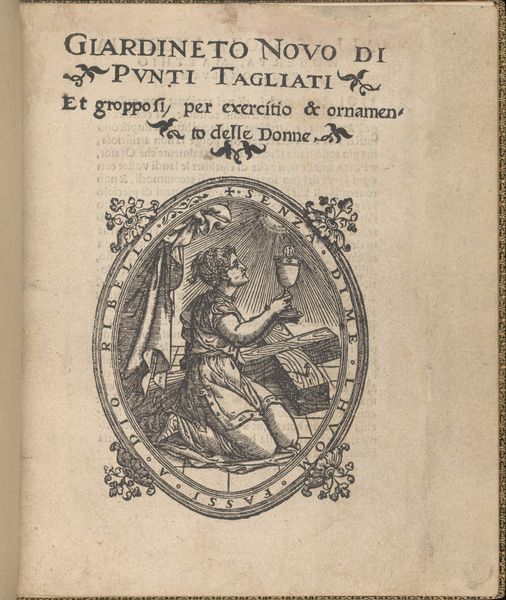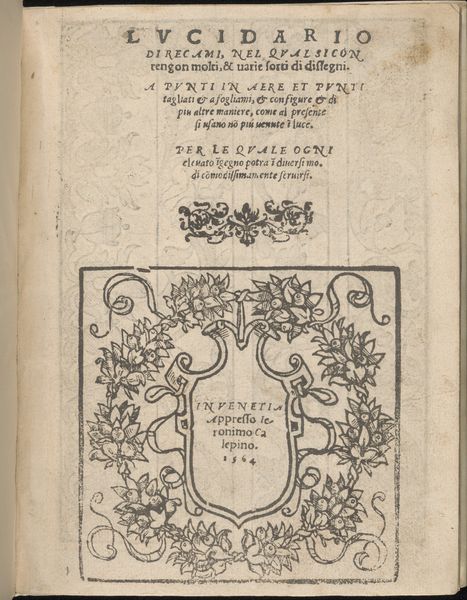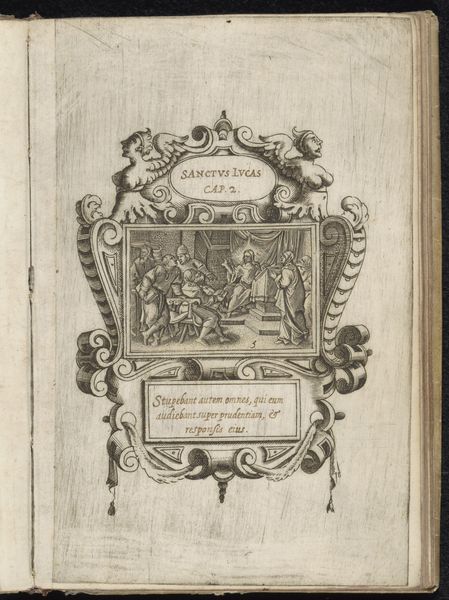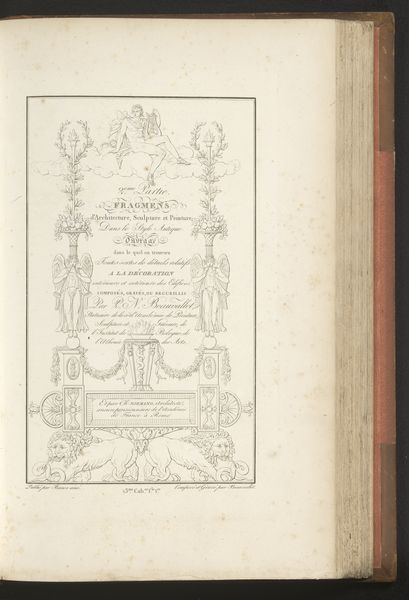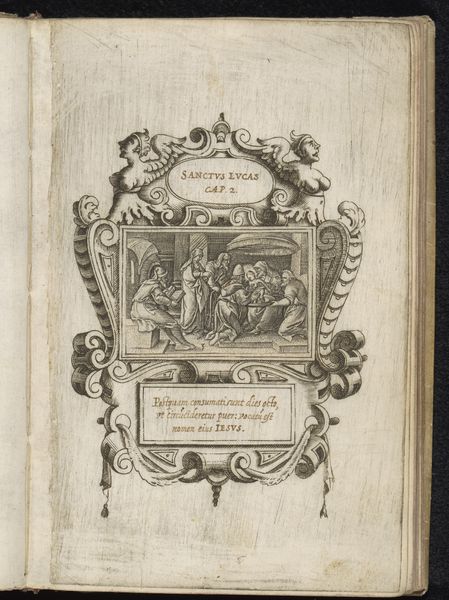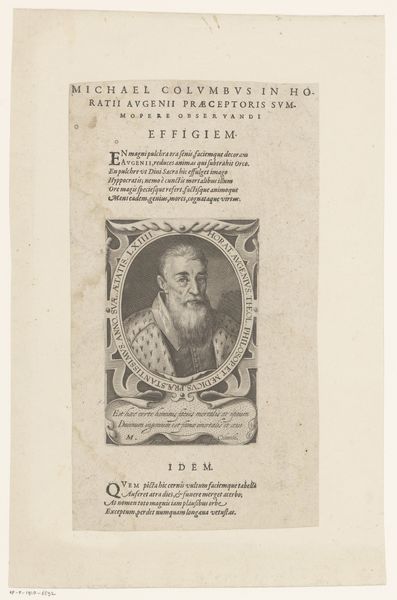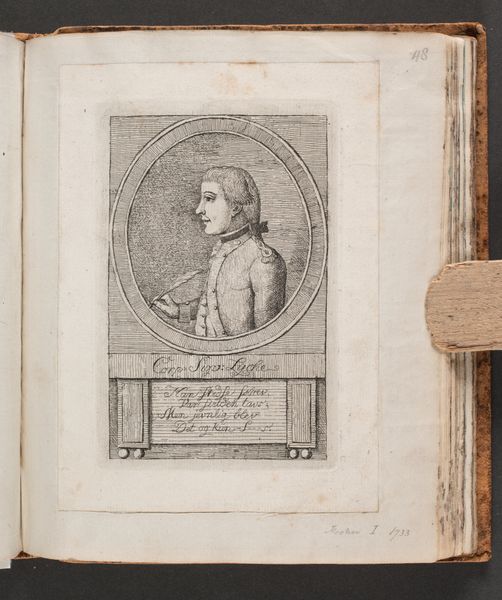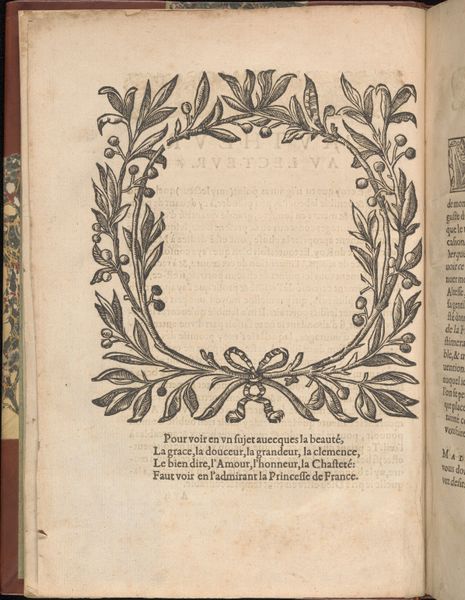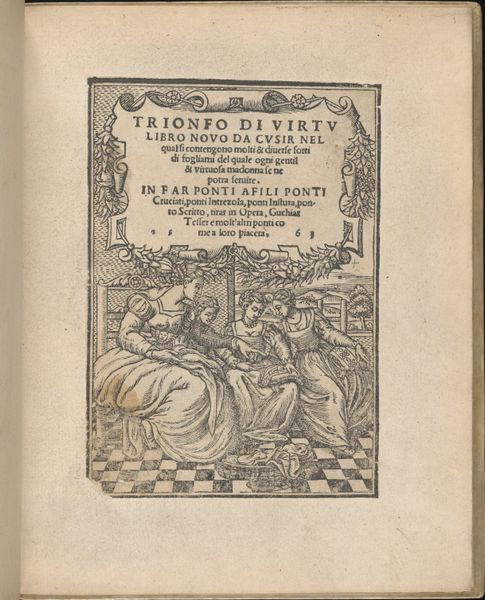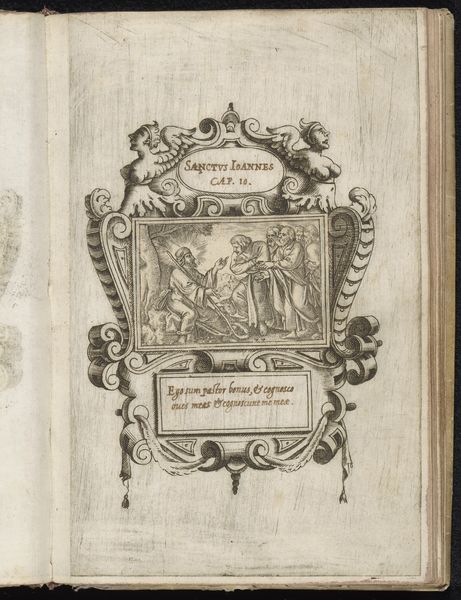
Les Singuliers et Nouveaux Portraicts... page 2 (verso) 1588
0:00
0:00
drawing, print, etching, paper, engraving
#
portrait
#
drawing
# print
#
etching
#
paper
#
11_renaissance
#
history-painting
#
engraving
Dimensions: Overall: 8 1/16 x 6 5/16 in. (20.5 x 16 cm)
Copyright: Public Domain
Curator: What a striking book! This is page two, verso, from Federico de Vinciolo’s "Les Singuliers et Nouveaux Portraicts…" printed in 1588. We’re looking at an engraving and etching on paper. It is currently held at the Metropolitan Museum of Art. Editor: It feels quite somber. The detail in the ruff is exquisite, but the overall effect of the portrait and laurel wreath seems almost…funereal? Curator: It's fascinating how techniques like etching and engraving allow for such detailed reproduction, making these portraits widely accessible. Think of the paper production itself—the labor, the resources—all funneling into this image designed for dissemination and perhaps, influence. Editor: And considering it's a portrait, that dissemination served a specific purpose. The text below suggests the figure within, Lodoica Lotharinga, is linked to Henry through celestial sponsors—Jupiter, Mars, Phebus—legitimizing power through a weave of classical allusion and dynastic aspirations. How fascinating the image production supports political machinations! Curator: Absolutely. The very act of creating multiple impressions democratized the image, while simultaneously upholding social hierarchies. It's an object of material culture, undeniably, but also a carefully constructed message. Editor: The frame of olive branches and the poem work together to enhance that effect. Notice the small ribbon, how everything focuses your attention towards this figure. It suggests the political significance vested within the image and the woman portrayed. It isn't just about aesthetic, but about actively shaping opinions. Curator: And think of the distribution network—bookbinders, print sellers, messengers. The life of this object extended far beyond its creation. What dialogues, arguments, agreements it may have fomented throughout the centuries since. Editor: Indeed. It is much more than ink on paper. The network it sat in has influenced its status ever since, making it so relevant in socio-political histories. Curator: Precisely! Each tiny mark on the page tells a bigger story, connecting materials to broader currents of history. Editor: This was incredibly enlightening to contemplate how processes, social, and political elements play critical roles in something seemingly simplistic at a first glance.
Comments
No comments
Be the first to comment and join the conversation on the ultimate creative platform.
